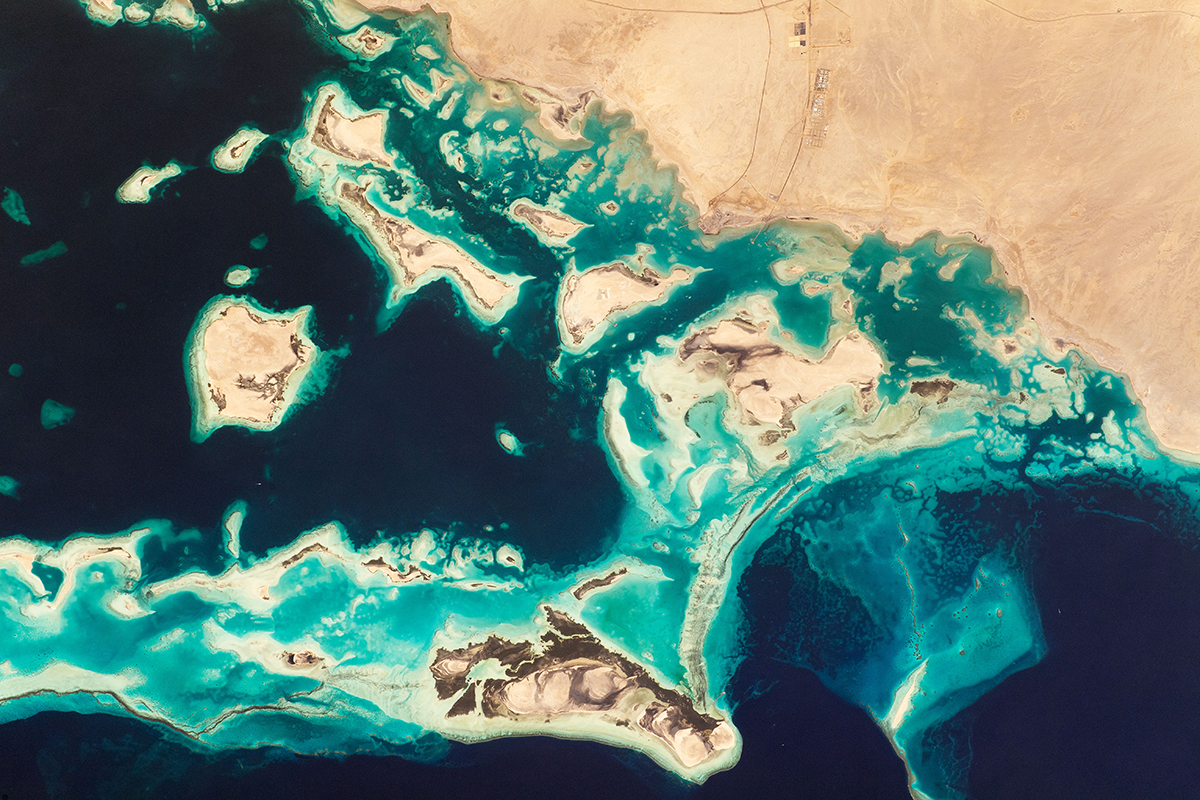An astronaut captured a striking view of the northwest coastline of Saudi Arabia, showing the extent of a coral reef where Saudi Arabia hopes to boost sustainable tourism and where up to 260 reef species thrive, according to a post the NASA Earth Observatory blog.
The photo was taken November 26, 2020 with a Nikon D5 digital camera using a 400 millimeter lens and is provided by the ISS Crew Earth Observations Facility and the Earth Science and Remote Sensing Unit, Johnson Space Center.
“Looking down from the International Space Station (ISS), an astronaut captured this view of the northwest coastline of Saudi Arabia, where up to 260 coral reef species thrive. The salty, warm waters off the coast of the Arabian Peninsula create an optimal environment for coral reefs to grow, mainly in shallow lagoons where the shoreline meets the Red Sea. The water transitions from bright turquoise in the lagoons to deep blue as depth increases,” the NASA blog post notes.
“Fringing reefs, which start at the shore and grow toward the sea, line the northwestern Saudi Arabian coastline. Coral reef biodiversity increases to the south, where patch and barrier reefs combine with fringing reefs to form rich ecosystems. Coral reefs are known as “rainforests of the sea” for their biodiversity and their functionality in nature—providing a food source for other sea life and humans, while also protecting shorelines.
“With the human population growing on the arid Arabian Peninsula, there is increasing demand for a freshwater supply. That demand is often met by the use of desalination plants. Currently, the country is home to the world’s largest desalination plants, which produce freshwater and brine, a salty wastewater byproduct. Some brine flows back into the Red Sea and can decrease the dissolved oxygen in aquatic ecosystems. This is known as hypoxia, and it can pose a serious threat to coral reef ecosystems and biodiversity in the Red Sea.”









